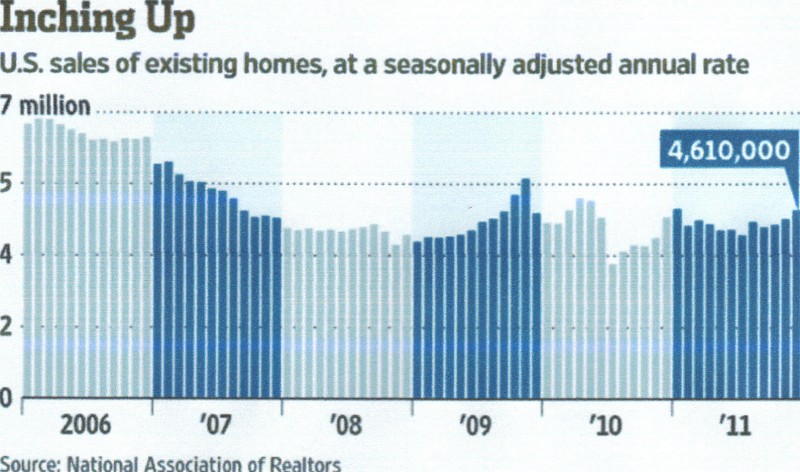MERS Mortgage Electronic Registration Systems
For information about Southern California luxury homes in Los Angeles County, Orange County and San Diego County real estate, call Bob Cumming of Keystone Group Properties at 310-496-8122. Keystone Group Properties services discriminating buyers of coastal Southern California real estate in Malibu to homes near the waterfront in Newport Beach to La Jolla.
MERS Mortgage Electronic Registration Systems
MERS’ primary function is to act as a document custodian. Major players in the mortgage lending industry created MERS to simplify the process of transferring mortgages by avoiding the need to re-record liens – and pay county recorder filing fees – each time a loan is assigned. “Instead, servicers record loans only once and MERS’ electronic system monitors transfers and facilitates the trading of notes …” Currently over half of all new residential mortgage loans in the United States are registered with MERS and recorded in county recording offices in MERS’ name.
This has reduced transparency in the mortgage market in two ways. First, consumers and their counsel can no longer turn to the public recording systems to learn the identity of the holder of their note. Today, county recording systems are increasingly full of one meaningless name, MERS, repeated over and over again. But more importantly, all across the country, MERS now brings foreclosure proceedings in its own name – even though it is not the financial party in interest. This is problematic because MERS is not prepared for or equipped to provide responses to consumers’ discovery requests with respect to predatory lending claims and defenses. In effect, the securitization conduit attempts to use a faceless and seemingly innocent proxy with no knowledge of predatory origination or servicing behavior to do the dirty work of seizing the consumer’s home.
Consumers, who are facing foreclosure, that try to assert predatory lending defenses are often forced to join the party – usually an investment trust – that actually will benefit from the foreclosure. As a simple matter of logistics this can be difficult, since the investment trust is even more faceless and seemingly innocent than MERS itself. The investment trust has no customer service personnel and has probably not even retained counsel.
Inquiries to the trustee – if it can be identified – are typically referred to the servicer, who will then direct counsel back to MERS. This pattern of non-response gives the securitization conduit significant leverage in forcing consumers out of their homes. The prospect of waging a protracted discovery battle with all of these well funded parties in hopes of uncovering evidence of predatory lending can be too daunting even for those victims who know such evidence exists. So imposing is this opaque corporate wall, that in a “vast” number of foreclosures, MERS actually succeeds in foreclosing without producing the original note – the legal sine qua non of foreclosure – much less documentation that could support predatory lending defenses.
A critique of the effect of securitization lies in the impact it has on civil procedure. Discovery, negotiation, and litigation in general is more expensive for consumers with securitized loans than it is for loans funded by the traditional secondary market. Legal scholars have made a compelling case for the serious potential consequences for consumers when businesses use procedural dispute resolution costs as a hedge against enforcement of substantive law.
Moreover, an extensive literature demonstrates the great vulnerability of our civil justice system to manipulation of procedure in general, and discovery in particular. For example, a federal district judge’s remarks from the late 1970s seem equally resonant today:
The civil justice system in the United States depends on the willingness of both litigants and lawyers to try in good faith to comply with the rules established for the fair and efficient administration of justice. When those rules are manipulated or violated for purposes of delay, harassment or unfair advantage, the system breaks down. There continues to be abuse of the judicial process. Abuse of the judicial process occurs most often in connection with discovery. Unjustified demands for and refusals to provide discovery prolong litigation and drive up its costs. Fabrication and suppression of material facts are regrettably common occurrences, although lawyers and judges are often reluctant to admit it.
Given these observations, we should not be surprised to find a business system that derives its revenue from creating procedural roadblocks in the way of consumers litigating from the brink of homelessness.
One characteristic of structured finance is the erection of such barriers. In traditional two and three-party mortgage markets, consumers and their counsel had a clearer idea of whom they were borrowing from and who might seek to foreclose upon them if they failed to repay. Service of process, interrogatories, depositions, and negotiations could be expected to involve only one company which was responsible for all, or nearly all, the relationship functions associated with the loan.
By comparison, selling a loan into a contemporary structured finance conduit can force consumers to communicate with and litigate against many more business entities. Even simple litigation tasks, such as service of process, interrogatories, and requests for production of documents, can become much more complicated in structured finance. One could serve one party years’ ago. Today, one might need to serve ten or more different parties or businesses.
This is a major challenge as the consumer will almost always have no knowledge of the name, address or other contact information for many of these firms. Legal counsel for the foreclosing party most likely does not know which businesses were involved in performing the various functions associated with the loan. Phone calls to the loan’s servicer are frequently ignored, subject to excruciating delays, and typically can only reach unknowledgeable staff who themselves lack information on the larger business relationships.
Securitization trustees are not in the business of counseling the thousands of mortgagors pooled in each of the many real estate trusts they oversee. Policy makers must not underestimate the staggering difficulty of reconstructing the facts involved in only one loan. Securitization creates an opaque business structure that consumers have great difficulty forgathering.
Securitization also complicates the paper trail for a given mortgage by facilitating frequent permutations in the servicing and ownership history of the loan. One of the benefits of securitization is that it allows trustees to shop for the most efficient servicer, reassigning servicing rights for loan pools when a better deal comes along. And, depending on how the securitization conduit is structured, a loan may undergo several assignments in route to its destination pool. While these changes may help ensure that the pool securities pay out on time and otherwise manage risks to the businesses involved, they also raises costs for the consumer attempting to piece together who did what to them.
Mortgage loan documentation has become more complex, the organizational technology of securitization has displaced older, more transparent, public systems for maintaining records. Nowhere is this more apparent than the use of the Mortgage Electronic Registration System, or MERS, to circumvent county recording offices.
It is suggested the consumer consult with a legal firm that is most experienced in working with MERS and the multiple issues.
Malibu CA Showcase of Homes



